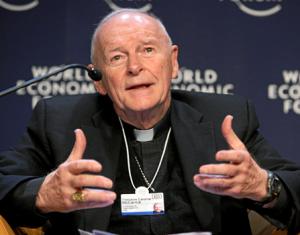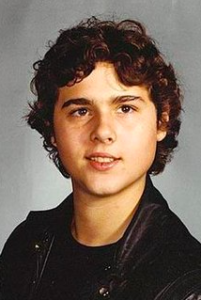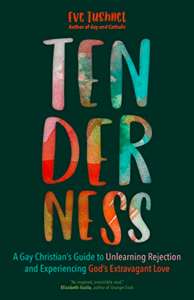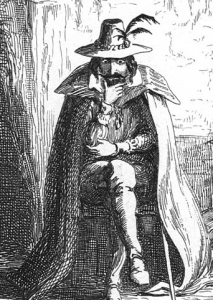THIS SERIES DEALS WITH SEXUAL ABUSE. PLEASE READ WITH CAUTION.
AN INTRODUCTION AND FURTHER DISCLAIMERS
MAY BE FOUND HERE.
O Lord God, author of peace and lover of concord: Bestow upon us, we pray, a spirit of unity, forgiveness, and charity, together with true humbleness of mind; that, in all our conversation, we may shew forth that righteousness, without which no man shall enter the kingdom of heaven; through Christ Jesus our Lord, who liveth and reigneth with thee, in the unity of the Holy Ghost, ever one God, world without end. Amen.
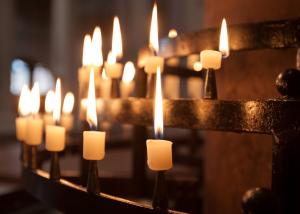
Previous posts in this series: The Victims; The Monster and the Mirror; The Bishops’ Gambit; Pope John Paul II; Pope Benedict XVI; Pope Francis
How Many Extra Disclaimers Can I Fit in One Blog Series
Ho boy.
As with my section on the Pope Emeritus, I feel I should offer a disclaimer. I intensely dislike and distrust Archbishop Viganò. I did before I read the McCarrick report, and indeed, even when he released his own letter in 2018, the thing smelled fishy to me (here are my receipts for that). As with Pope Benedict XVI, but in the opposite direction, this dislike might unduly influence my evaluation of his actions, and I feel my readers have a right to know that up front. I’ll do my best.
The 2018 Letter
Carlo Viganò entered the priesthood in 1968, and began working for the Vatican five years later. He served as Nuncio to Nigeria for six years, and then worked for the Vatican’s Secretariat of State in a few different capacities. He again became a nuncio in 2011, this time to the US. In 2016, now 75 years old, the Archbishop went into retirement.
In the late summer of 2018, he published a letter attacking the Pope and a significant number of other prelates. Archbishop Viganò alleged that he had tried to expose McCarrick, and that Pope Benedict had placed sanctions on him. But (he claimed) Pope Francis lifted these, and was even now moving against McCarrick only under media pressure. He claimed to have a lot of documentation but provided little, and based a number of his claims on conjecture—phrases like “I do not know” and “as seems certain” and “I believe that” recur over and over.
Archbishop Viganò has been in hiding since that time, claiming to fear for his life. He continues to publish letters and interviews attacking His Holiness (and a number of other prelates) for following the “homosexual agenda of the New World Order,”1 as one does. He has also started criticizing the Second Vatican Council. This summer he wrote that “from Vatican II onwards a parallel church was built, superimposed over and diametrically opposed to the true Church of Christ” (emphasis his).
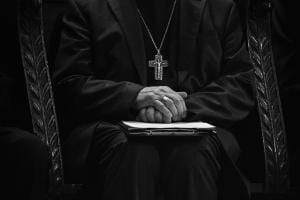
Let’s review the documents, shall we?
Archbishop Viganò’s Memoranda
During his time with the Vatican Secretariat of State, Archbishop Viganò wrote two documents (one in 2006, one in 2008) on the McCarrick rumors. In the first, he did suggest an investigation. Cardinal Bertone shared his concerns with the Pope. Viganò asserted that His Holiness placed “sanctions” on McCarrick around 2010, but he didn’t—he merely advised, advice McCarrick mostly circumvented. Moreover, he did this before Viganò’s involvement, and long before 2010.
The Archbishop wrote the second after reading Sipe’s letter. He claimed in 2018 that he urged his superiors to “intervene as soon as possible by removing the cardinal’s hat from McCarrick and [subjecting him] to the sanctions established by the Code of Canon Law … reduction to the lay state.” This is, cough, an exaggeration. Viganò’s 2008 letter (preserved in the Vatican archives) says only this about penalties:
Si vera et probata sunt exposita [if these things be true and proven], it would require an exemplary measure that might have a medicinal function that would soothe the serious scandal for the faithful … For once, it might be healthy if the ecclesiastical authorities were to intervene before the civil authorities and … before the scandal erupts in the press. This would restore a little dignity to a Church so tried and humiliated for so many abominable behaviors on the part of some pastors.
The Archbishop complained that these memoranda weren’t returned to him. However, according to the Vatican, there was no reason they would be. He had no disciplinary powers, after all. And the Curia were already familiar with the contents of both letters before Viganò sent them.
He also said Archbishop Montalvo had warned Rome McCarrick was a predator in 2000. We’ve seen that this seriously misrepresents what Montalvo wrote. The closest he ever came to calling McCarrick “a predator” was to say the rumors were “neither definitively proven nor completely groundless.”
The Nuncio
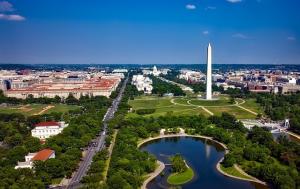
The next major development came in the summer of 2011, with the abrupt passing of Nuncio Sambi. Pope Benedict XVI made Viganò the next US Nuncio in October.
The Congregation for Bishops did not give any written instructions to Archbishop Viganò about McCarrick. Cardinal Marc Ouellet became head of the Congregation in 2010. He says that he did verbally tell the Archbishop that McCarrick was supposed to be observing certain “conditions and restrictions due to some rumors”. However, Ouellet doesn’t appear to have known the extent and gravity of the charges, nor that they were anything more than rumors.
The Archbishop stated, in his 2018 open letter, that he reiterated these “restrictions” to McCarrick on their first meeting at the nunciature. According to him, the prelate mumbled an evasive reply. McCarrick stated categorically that no such meeting ever took place—for whatever a claim from him is worth. There are no documents to back up Viganò’s claims about this; but as far as I can tell, this wasn’t unusual, and does not in itself detract from his testimony.
Fair-Weather Friendliness
What does make his account dubious is that McCarrick continued making public appearances. He gave talks, accepted awards, and so on—including attending several events Archbishop Viganò hosted. At a dinner in Manhattan in 2012, which both men attended, the Archbishop referred to to him in his remarks: “His Eminence Cardinal Theodore McCarrick—he’s an ambassador from a certain time, as a priest, as a bishop … and very much loved from us all.” McCarrick wrote him several effusive thank-you letters, alluding to the Archbishop’s graciousness and affection. Other guests at these events confirm that Viganò treated McCarrick warmly, not only in public but in private. Both shared an interest in religious liberty issues; nunciature personnel report that they discussed the subject over meals, both in the nunciature and at McCarrick’s own residence.

I have no proof that they ate takeout pizza, but you have no proof that they did not.
It’s hard to reconcile such a cordial relationship with Viganò’s claim he’d been calling for McCarrick’s laicization since 2006! Nor does it fit his description of “sanctions” supposedly set down by Pope Benedict. But even if Archbishop Viganò mistakenly thought there were sanctions, one would expect him to try to persuade the cardinal to observe them; or at the very least, not to make speeches praising him and host him at social events!
As he had during Sambi’s tenure, McCarrick informed the Nuncio regularly of his travels, which remained as incessant as ever. So far as I could tell, Viganò never even suggested that McCarrick make a greater effort to observe the Vatican’s instructions.
Don’t Just Do Something, Stand There
In 2012, Priest 3 wrote to the Nuncio. He had filed a civil complaint against two New Jersey dioceses and Bishop Bootkoski (Bishop of Metuchen from 2002 to 2016); however, neither diocese informed Rome of this. Priest 3 outlined his experiences, and offered to furnish Archbishop Viganò with copies of his filings and over a dozen psychological evaluations to buttress his reports.
The Archbishop did not reply to Priest 3. He did write to Cardinal Ouellet, noting the allegation against Bootkoski and then turning to McCarrick.
The numerous accusations made against Card. McCarrick are well known … Cardinal McCarrick therefore should not have accepted any invitation of a public nature and should have “conducted a quiet life of prayer and penance for past imprudent actions.” The Cardinal did not obey this advice. …
He often appears in public for social or ecclesial events … He therefore did not follow what was requested of him by Card. Re to “take up residence in a home for the elderly, perhaps one directed by religious sisters” or “ask a monastery to take you in …”
Moreover, the Cardinal continuously travels … He has been present in several high-level meetings including one in Iran to free American hostages, without having received any mandate from the [USCCB] or from the Holy See. … Cardinal Re’s admonition to him is a dead letter.
As footnotes on pages 382-383 say coldly:
In his statement, Viganò wrote, “It was also clear that, from the time of Pope Francis’ election, McCarrick, now free from all constraints, had felt free to travel continuously, to give lectures and interviews.” … Viganò did not discuss in the statement that he was aware that McCarrick was already engaging in these activities well before Pope Francis’ election in 2013, or that Viganò had personally participated in some of them without registering any objection …
Viganò also did not tell Cardinal Ouellet … that McCarrick himself had offered “to go into a more retirement mode” in his June 2012 letter to Viganò, or that Viganò did not take the opportunity to encourage McCarrick to do so.
Priest 3 Hung Out to Dry
Cardinal Ouellet wrote back to the Nuncio with concern, given that McCarrick was openly flouting the Holy See’s counsel. He directed Viganò to investigate Priest 3’s claims. He pointed him toward the Vicar General and the Vicar for Clergy in the Diocese of Metuchen. This was the obvious place to start: it was McCarrick’s first see, and the place he had molested Priest 3.
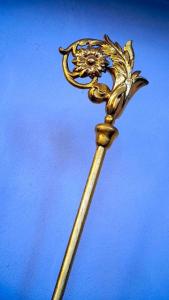
Both vicars stated flatly that Archbishop Viganò never got in touch with them. So did Priest 3, who had written personally to him offering important evidence, and was awaiting an answer. It appears Viganò conducted no investigation into Priest 3’s allegations—certainly not the kind Cardinal Ouellet told him to. Nor, incidentally, did he say anything to the USCCB or Catholic Relief Services, which McCarrick remained heavily involved with.
So not only was the Archbishop derelict of his duty—and tried, years later, to shift the blame onto his brother bishops, up to and including the Pope!—but Priest 3’s evidence never reached Rome until the Vatican itself was conducting the investigation Viganò shirked. In fact, Priest 3’s testimony didn’t get there until this year. More than seven years after Ouellet told the Nuncio to look into not just McCarrick rumors, but that testimony specifically.
What Viganò did do was telephone Bishop Bootkoski. Bootkoski told him Priest 3 was unreliable. And that, it seems, was that. Apparently the Archbishop didn’t even mention this phone call to Cardinal Ouellet. Perhaps that’s natural. It would have meant either lying, or admitting he conducted a piss-poor excuse for an investigation.
Canto XXVIII
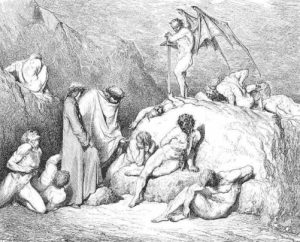
Gustave Doré, illustration of the punishment of the sowers of discord in Dante’s Inferno, 1857.
There’s plenty more to say about Viganò. We have only reached page 387 out of 461 at this point; his name appears more than a hundred more times. But truthfully, I’m sick of writing about the man. It isn’t difficult to follow, if you care to read up for yourself. Suffice it to say that his vitriolic letter—blaming everyone but himself for the mess he very much helped create, lying outright and by omission, and having the gall to paint Pope Francis as the chief villain and call on him to resign—is thoroughly despicable. His insolence and paranoia have led him to the edge of schism and heresy. Archbishop Viganò should repent and publicly retract his outrageously dishonest claims.
Then there’s the multitude of American bishops who called his screed credible, like Bishop Strickland of Tyler or Archbishop Cordileone of San Francisco. They owe His Holiness (and their congregations) sincere, frank apologies. This episode was at best a disastrous lapse in judgment on their part—and at worst, slander and fomenting schism.
It is to the bishops in general, and to some particularly horrible examples, that I’m about to turn.
Further installments: Den of Thieves; Quo Vadis
1The “New World Order” is a conspiracy theory, or class of such theories, about an emerging totalitarian world government. The culprits vary. Jews are of course a favorite target; other options include Freemasons (Viganò’s own choice), New Agers, and in some cases aliens. These are not mutually exclusive—conspiracy theories often overlap.


